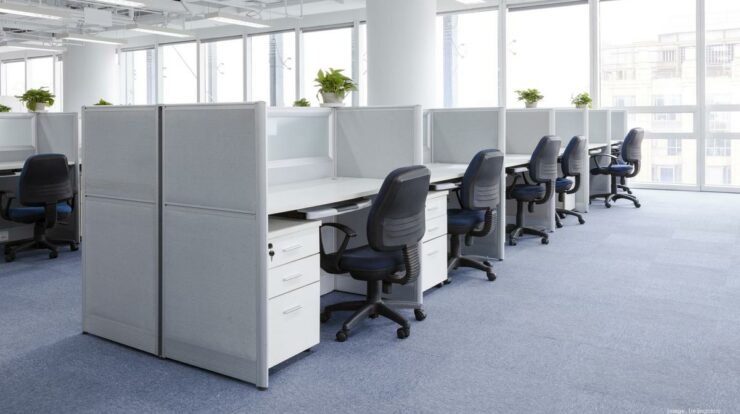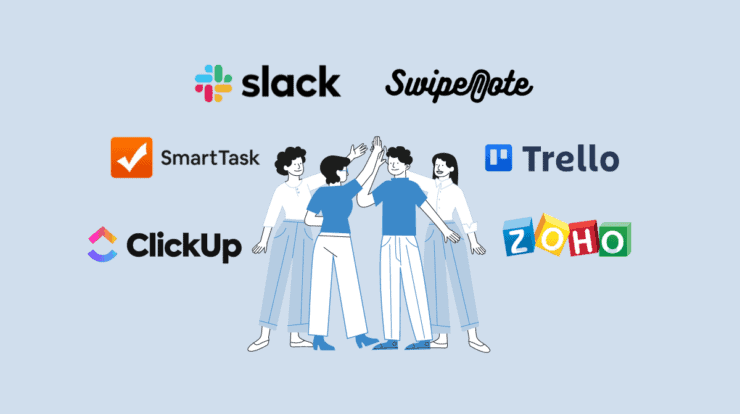
The epidemic has transformed the corporate environment as we know it. As a result, many businesses are already adopting a mixed workplace strategy. There is no longer a requirement for every employee to have a desk in the office, whether they work remotely, in the office, or a combination of the two. That is why office hoteling has proven valuable in assisting with managing and optimizing workplace uses.
Office hoteling is the technique of pre-reserving office space and resources. The concept originated at EY’s Chicago offices and has since become more automated and simplified as technology has advanced. For example, employees at EY who spend most of their working hours on the road or telecommuting from home would contact the ‘office concierge’ to reserve a workstation, office, or conference space as needed. Two decades later, office hoteling has grown in popularity, particularly in corporate settings.
With an increasing need for a hybrid workplace, office hoteling is becoming a must-have for the modern campus. However, before we get into the benefits and best practices of office hoteling, let’s look at what sets it apart from another popular trend: hot desking.
Hot Desking vs. Office Hoteling
Office hoteling and hot desking are both methods that enable employees to look for a desk and observe real-time availability, either on a digital map or in person, reserve a seat, and check-in and out.
But there is a significant difference.
Spaces can be reserved for an extended period with office hoteling. This is a popular option for employees visiting campus who want to ensure that they will have a workspace for their visit.
Hot desking, on the other hand, allows employees to book an unoccupied desk on the spot. It allows employees to reserve a place at the last minute. It also enables businesses to quickly adjust to unforeseeable conditions, such as changes in safety regulations, by limiting which desks in the office can be utilized.
What’s the most excellent part about office hoteling and hot desking? First, it doesn’t have to be either/or – some systems can provide both, allowing you to select whether to limit desk booking by space or not, based on your specific needs.
What Are the Advantages of Office Hoteling?
Why should you think about office hoteling and hot desking? Here are seven significant advantages of employing them at your firm.
Office Square Footage Savings
One of the critical benefits of office hoteling highlighted by EY is the significant potential savings in real estate expenditures, with the business citing annual savings of more than $47 million.
Companies can allow for headcount growth without investing in extra office space because employees are not confined to a single workplace or expected to spend eight hours in the office daily.
More Employee Office Resources
When switching to office hoteling, office resources are also freed up. For example, when Sun Microsystems analyzed employee attendance in its Santa Clara headquarters, they discovered that at least half of their employees were off-site or working from home for most of the workday. Combined with office hoteling, this made additional resources available to employees in the workplace, such as desks, rooms, and equipment, rather than being restricted to specific users.
Employee Empowerment and Engagement Have Increased
Employees benefit from a flexible work environment, which increases their productivity and morale in addition to the firm’s financial and geographical benefits of office hoteling—giving employees the freedom to work how they wish by removing the strict need for daily attendance in the same office or cubicle.
Productivity and collaboration have increased.
Another advantage of the flexibility of office hoteling is the development of space for enhanced cooperation. With collaborative conference rooms and workstations designated by necessity rather than an assignment, there is greater availability and hence convenience for employees to identify and use these venues to collaborate with their peers. Companies that make it easy for employees to discover collaborative places encourage them to collaborate more frequently.
Improved Visitor Management
The workplace hoteling technology can also be leveraged to provide guests, visiting consultants, and clients with seamless experiences. For example, visitors can reserve spaces ahead of time using an office hoteling solution. Furthermore, an office hoteling application frequently includes digital workplace maps and step-by-step indoor navigation, making it easier for guests to visit their location. These characteristics can also assist them in locating restrooms, cafeterias, and other vital areas of interest.
Across Satellite Offices, Consistency
For major firms with several corporate campuses and global satellite offices, office hoteling allows workers to work anywhere in the world while still having access to the resources they require. In addition, having a consistent experience across offices, especially for employees who must travel to various locations each year, can help improve comfort, focus, and productivity when working in an unfamiliar environment.
Employees should be able to see the space occupancy and density.
Occupancy sensors indicate whether or not a space on campus (for example, a phone booth) is occupied. They can be used with an office hoteling platform to display the occupancy of popular on-campus locations other than desks and rooms. Employees can also observe the density of campus locations, such as the cafeteria, which helps them comply with social distancing regulations. The real estate company can also use this space activity data for future planning.
What Should You Consider When Choosing an Office Hoteling Solution?
When researching office hoteling alternatives, there is a lot to think about. Prepare to ask questions like these to identify the appropriate match for your firm.
- What is included in their out-of-the-box solution? What will the cost of extra features and customization be?
- Do they interface with our current IT stack (for example, ERP, HRIS, CRM, CPM, and so on)? Are these integrations built-in, or do they need to be implemented? Can they build an integration to a platform if there isn’t one already?
- How developed is their product? Do they already have customers in industries and use-cases similar to ours? Do they have a track record of success in our industry?
- What are the specific cost, schedule, and implementation workflow? Do they outsource the implementation or perform they do it in-house? What resources are required on our end to support and complete this process (for example, gear, software, and personnel)?
- What is the state of their customer support infrastructure? How quickly can they respond to emergencies? What is their typical SLA (Service Level Agreement) for clients like us?
- Do they solicit customer input regularly? How frequently do they introduce new features? Will they develop custom features for you in-house?
Although finding the perfect office hoteling solution for your firm may take time and effort, it will pay off in the long term by future-proofing your deployment and ensuring it can scale with your development.
Best Practices for Implementing Office Hoteling in Your Organization
While office hoteling can provide significant benefits to a business, it can also result in financial loss, decreased productivity, and increased employee discontent.
- So, what are the best practices to follow when introducing office hoteling into a workplace?
- Utilize a Space Management Tool: Use a space management tool to oversee the rollout of new buildings or individual floors on campus.
- Track Desk Usage: Track desk usage so you can learn which floors on campus are the most popular and better plan for future floorplan adjustments.
- Intuitive Booking Processes: Choose a platform that lets employees quickly see which desks are available and book them for individual or group use.
- Congestion Management: Integrate occupancy sensors to help you monitor crowded areas and remain on top of safety regulations.
We are interested in learning how you may incorporate office hoteling and other future workplace elements into your organization? Contact our hoteling team to set up a live demo, or read our whitepaper to learn more about creating a modern, digital workplace.


